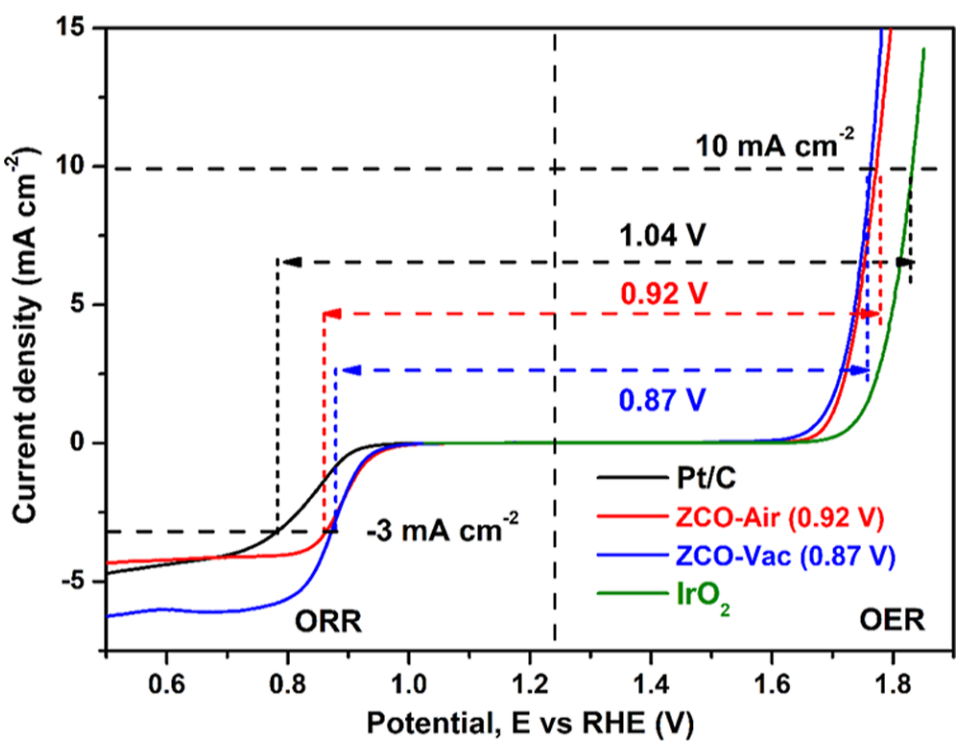Abstract
Efficient bifunctional oxygen catalyst is a crucial requirement to ensure optimal and stable performance in metal–air batteries and fuel cells, both of which are considered front runners to replace combustion technologies based on fossil fuels. Our work focuses on this critical requirement, and we propose, via a combined experiment-computation approach, a porous nanostructured non-stoichiometric zinc cobaltite (ZnCo2O4-ZCO) as an efficient bifunctional catalyst for oxygen reduction and evolution reactions (ORR and OER). The defects were incorporated into the ZCO nanocubes by sintering the product obtained from hydrothermal synthesis under different conditions. The ZCO samples annealed under air (ZCO-Air) and vacuum (ZCO-Vac) show bifunctional electrocatalytic activity (under alkaline conditions) toward ORR (@ −3 mA cm–2) and OER (@ 10 mA cm–2) at potential differences of 0.92 and 0.87 V, respectively. Both samples exhibit superior electrocatalytic activity than the prevalent standards, namely, Pt/C for ORR and IrO2 for OER, and show long-term stability crucial for practical applications. As calculated using first principles, the electronic density of states confirms that defects formed during annealing of ZCO (in air/vacuum) play a crucial role in enhancing electrocatalytic activity by altering the band gap of bulk ZCO to more optimal levels, suitable for the oxygen electrocatalysis. With effective activity toward ORR and OER, the work here establishes ZCO, with an appropriate heat treatment protocol, to be a suitable bifunctional catalyst for metal–air batteries and fuel cells.
